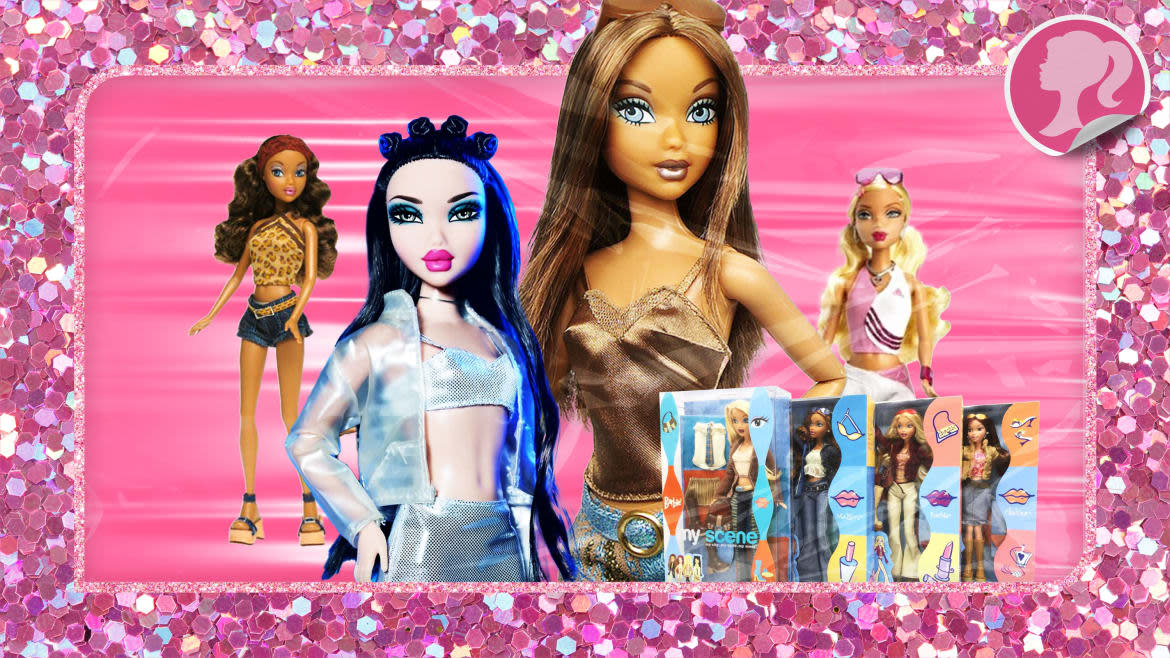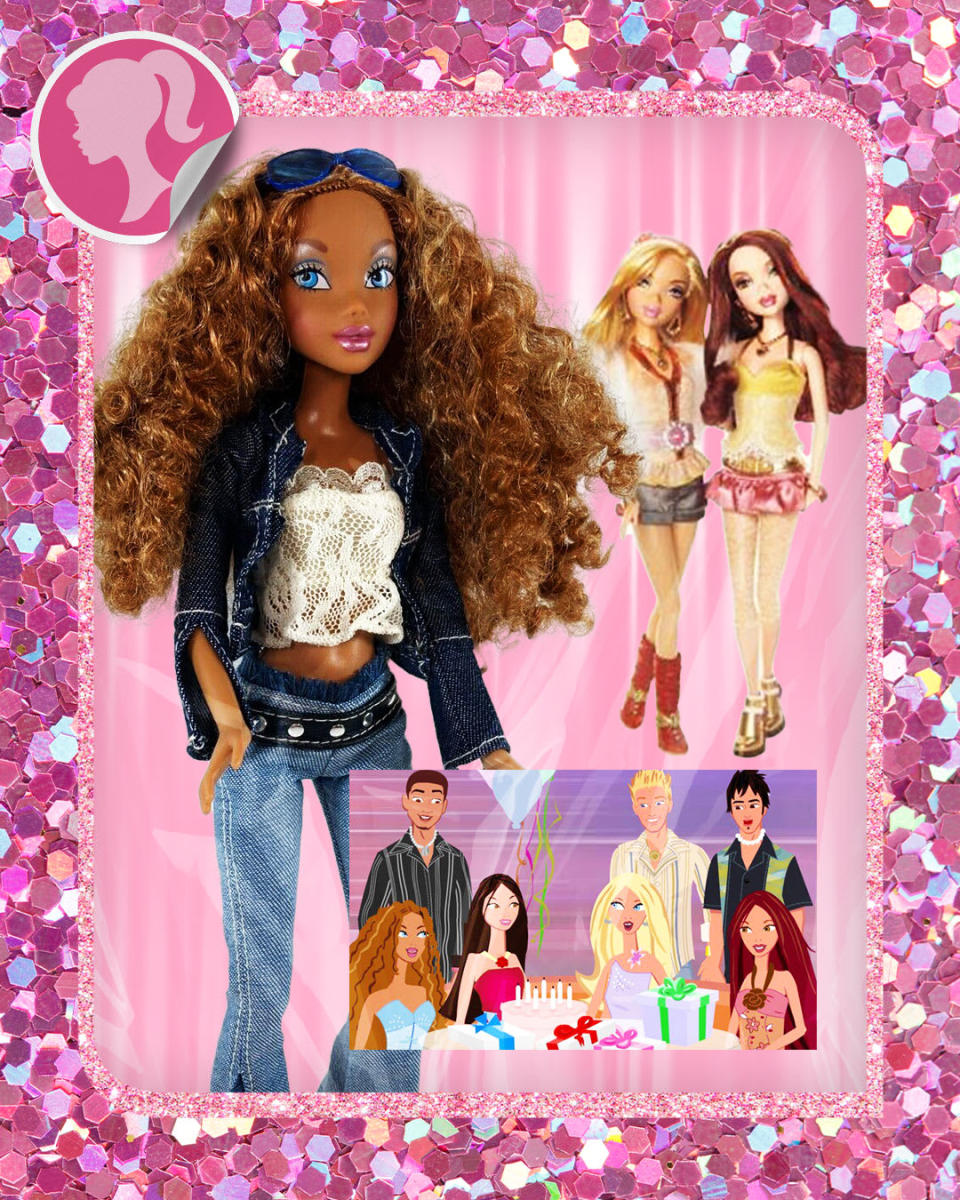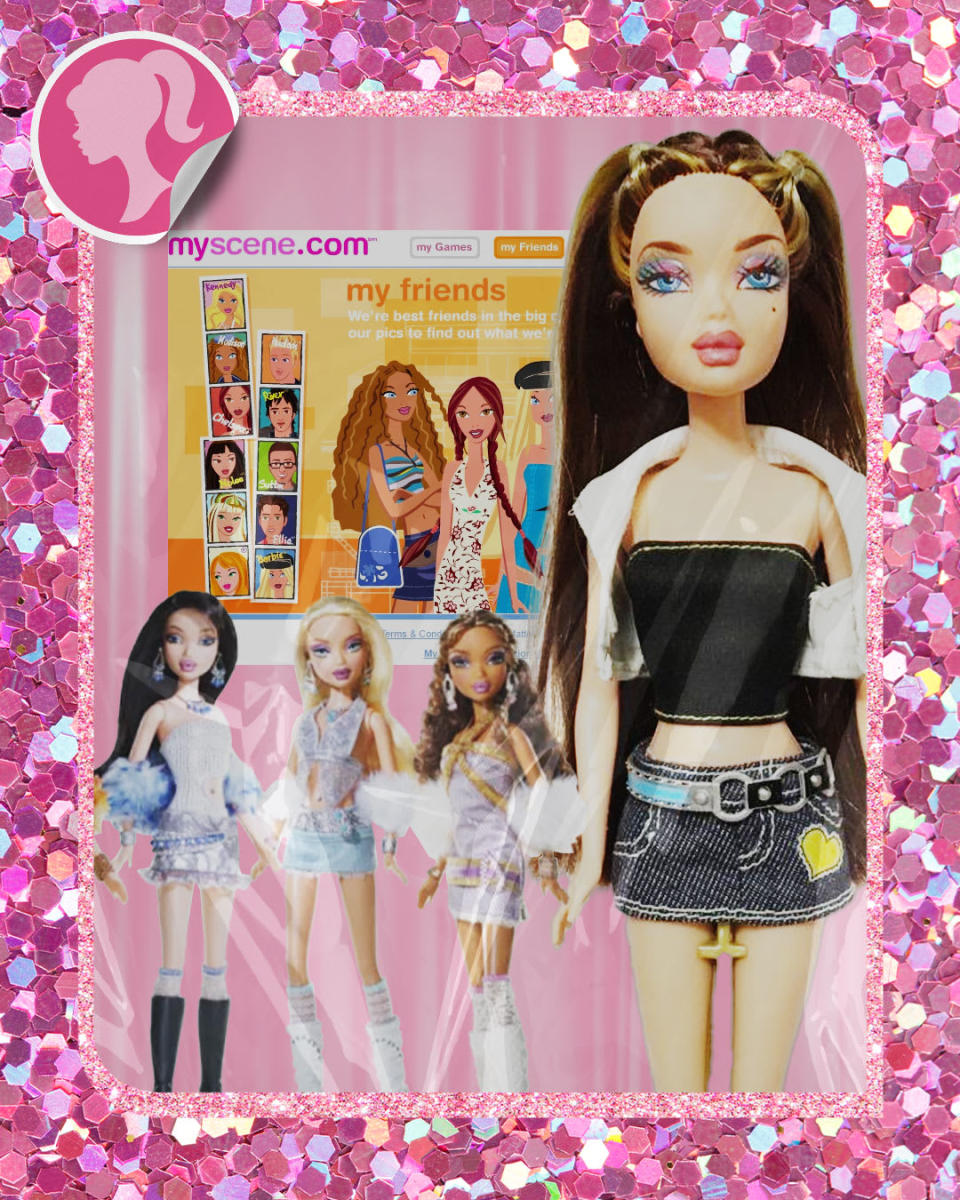The MyScene Barbies That Tried to Make Barbie Cool Again

- Oops!Something went wrong.Please try again later.
- Oops!Something went wrong.Please try again later.
It’s Barbie Week at The Daily Beast’s Obsessed, celebrating the doll’s pop-culture history, our favorite Barbie memories, and a certain major movie. Read all of our coverage here!
Despite years of fervent online chatter and a massive marketing campaign, we know very few plot details about Greta Gerwig’s inevitable summer blockbuster Barbie. However, in a Vogue cover story for the film’s star Margot Robbie, the director noted that the main protagonist’s arc would mimic the emotional journey of many modern American teenage girls, who are burdened by societal pressures and crippled with self-doubt. “They’re funny and brash and confident, and then they just—stop,” she told the magazine in May.
Barbie’s main trailer teases this storyline, too, when the doll leaves her ultra-pink, prelapsarian home, Barbie Land, for the “real world.” There, she encounters her supposed consumer base, which has clearly outgrown her. “We haven’t played with Barbie since we were 5 years old,” an adolescent girl tells Barbie, as her school-aged peers stare with distaste. The life-sized toy becomes flustered by the knowledge of her irrelevance.
The idea that Barbie would ever experience human insecurity seems like a subversive twist by Gerwig on the doll’s mythology. It’s funny to imagine the world’s most famous imaginary woman—an emblem of physical perfection and capitalist aspirations—suffering an identity crisis like the rest of us do at some point in adulthood. (Although, you could certainly read her ever-changing professions as one.)
However, it does reflect an actual moment of panic for the toy and its manufacturer Mattel that occurred in the late ’90s and early aughts due to declining sales and, later, its biggest competition at the time, Bratz.
Enter MyScene Barbie.
After decades of dominating the toy market and captivating the imaginations of young girls, Barbie would undergo a huge and pointedly familiar aesthetic transformation following the success of MGA Entertainment’s Bratz dolls. Only two years after the Bratz’s launch in 2001, the new hyper-feminine statuettes had taken a substantial bite out of Barbie’s market share. In 2004, Bratz outsold Barbie in the U.K. (It was the first time the Mattel product had fallen from the nation’s No. 1 toy slot since 1994.) And by 2006, Bratz had grossed a whopping $2 billion.

Even before Bratz would go on to make these numbers, Mattel knew they had a problem on their hands. In 2002, the toymaker unveiled a new series of Barbie called MyScene, which were more fashion-forward, mature-looking, and uncannily Bratz-esque in presentation—from the large heads to the doe eyes to the harsh makeup. Barbie even enlarged her ideally small feet to stay on trend with her cartoonishly disproportionate rival. She was also accompanied by a new set of cosmopolitan, racially diverse friends, embodying the lives of young, Manhattan “it” girls and boys.
Notably, the dolls also had an online component, a website called myscene.com that featured role-playing games and webisodes. This helped establish MyScene dolls, like Bratz, as distinctive personalities. It felt like you were engaging with a cartoon character, first and foremost, rather than a physical doll.
Funnily enough, before MGA launched Bratz in 2001, Mattel had already tried its hand at a more hip, multiethnic version of Barbie with the Generation Girl series and the talking fashion dolls Diva Starz, which actually resemble Bratz with their bobble-head proportions. Similar to MyScene, they both embraced the rise of the internet. The 2001 book 1001 Best Websites For Kids called the latter’s online platform “girl power at its best! At this site, you can be a private investigator, take part in the daily poll, match yourself to a Generation Girl, talk with celebrities like Vitamin C, and more.” Still, both brands were short-lived and failed to address the cultural void Bratz would successfully tap into.
If you had an obsession with dolls in the early 2000s, you can probably recall the advent of Bratz quite vividly, especially if you’re non-white. Everything about the dolls (aside from the slender proportions) felt decidedly anti-Barbie. That also included Black Barbie dolls, which always felt extremely generic, flavorless, and more like an afterthought to me. Bratz, on the other hand, were all about individuality. Whether or not I consciously recognized their inclusive messaging as a kid, the dolls affirmed exaggerated facial features, dark skin tones, and “urban” fashion in a bold, unprecedented way—even if it was all for the sake of profit.
While Bratz’ edgy, mature look sent many parents into a purantical panic, their arrival was a moment of excitement in my household—and, apparently, many others. I specifically remember being in a Target when my mother’s friend gleefully informed her about a new, Black doll on the market named Sasha–one of several non-white characters in the collection. My mother, who barely expressed enthusiasm over buying anything unnecessary, was uncharacteristically intrigued. Soon, Bratz, with all their tiny clothes and ornate accessories, would invade my toy box, which had previously been occupied by half-naked, mutated Barbies.
Eventually, I, like many twentysomethings it seems, would fall for Mattel’s significantly less cool and more sophisticated take on Bratz, albeit in virtual form. I never owned a MyScene doll, but I would visit the now-defunct site anytime our family desktop was available to give Barbie makeovers and engage in a Gossip Girl-like fantasy with the rest of her posh clique. Ultimately, I was never able to recreate the same rich connection I had with Bratz. Supposedly, other doll-obsessed girls and boys felt the same way.

After five years, MyScene dolls were ultimately discontinued in the United States, but their fleeting existence feels indelible to a certain sector of avid doll consumers. While never being able to topple or even compete with Bratz, the MyScene brand has managed to evoke a fair amount of nostalgia online. Even more than the physical dolls, it seems like other kids, like myself, had a particularly strong (and addictive) attachment to myscene.com. The site is both fondly discussed on Twitter and frequently revisited by millennial YouTubers playing bootleg versions of the games.
MyScene was just one of many aggressive measures Barbie had taken against Bratz, in what would be a years-long battle between their respective manufacturers. While the doll brands seem diametrically opposed, the Bratz line was infamously the brainchild of a Mattel employee named Carter Bryant, who was sued by the company in 2006 for copyright infringement. This legal action was a response to MGA suing Mattel for copying the likeness of its dolls with the MyScene collection.
While Mattel enjoyed the latest legal victory in the companies’ drawn-out dispute, it always seemed, to me, that Bratz had won the culture war over the past two decades, their successful social media presence and influence on Gen-Z fashion being primary examples. However, the enthusiasm surrounding Barbie, in light of the new film, has made this decades-long battle for relevance sound almost unfathomable.
Thanks to Gerwig’s new, inclusive take on Mattel’s product, which includes multi-racial and queer actors as various versions of Barbie and Ken, it seems like everyone is ready to imbue the once-rigid doll with their own uniqueness. (Although, everyone’s rocking the same shade of hot pink). The film’s character taglines “This Barbie/Ken…” that has become its own online meme have allowed fans, no matter what race, gender, shape or size, to see themselves in the canonically white, thin doll—even more than Mattel’s previous diversity efforts.
Barbie may be for everyone now, but this spirit of inclusion and individuality still feels very Bratz.
Keep obsessing! Sign up for the Daily Beast’s Obsessed newsletter and follow us on Facebook, Twitter, Instagram and TikTok.
Read more of our Barbie coverage HERE.
The Banned Karen Carpenter Biopic Was Barbie at Her Most Subversive
I Toured Barbie’s (and Ken’s) Real-Life Malibu DreamHouse
Get the Daily Beast's biggest scoops and scandals delivered right to your inbox. Sign up now.
Stay informed and gain unlimited access to the Daily Beast's unmatched reporting. Subscribe now.

